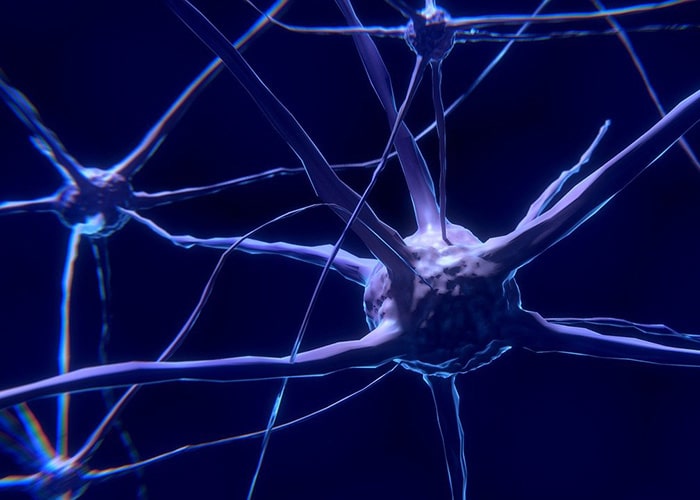A self-defending adaptive network is the next generation network that defends itself from security breaches. It is a system that knows and recognises the level of threat faced by an intrusion across a network. It uses a new method of machine learning to track threats, which can include ransomware, code hijackers, intrusion and illegal entry, theft, and unauthorised use. Such a network uses a set of modules that can be added or removed to operate and achieve specified goals. It can change its behaviour by modifying network devices.
Adaptive networks with AI are used for automated service provisioning. Here, network providers automate manual service life cycle processes. These processes are automated using packet and optical networks. Packet and optical networks are built using a software defined networking based automated platform, which is multi-layer and multi-vendor based and adopts DevOps processes. For instance, a network provider can automate the delivery of its wavelength services and plans, and can automate to extend this platform to other services using a phased approach.
Proactive network assurance is another area where AI based adaptive networks can be used. The network providers need to identify and correct as many network issues as they can foresee and predict. This helps in increasing network reliability and delivery with specified SLAs. AI based adaptive platforms improve the customer experience as they have features related to pre-emptive network maintenance across the optical, Ethernet and IP wide area networks (WANs). AI based automated platforms have network health prediction capabilities. Along the same lines, machine learning based analytics can predict the likelihood of a network node’s failure in a given timeframe.
“We could use AI to help us provide better help to operators with network resources.”
—Luis Jorge Romero, director-general, ETSI
AI based adaptive networks can help in fibre capacity analysis and optimisation. Policy based matching of channel and wavelength capacity improves the efficiency and adaptive planning of optical networks. Providers can predict signal variability by combining real-time network telemetry data and traffic forecasting with AI based predictive analytics. This helps in improving the system margin utilisation and reduces cost-per-bit.
AI-defined infrastructure
AI-defined infrastructure (AIDI) can manage planning, building, running and maintenance tasks. In planning tasks, AIDI is used for analysing demand trends and predicting infra requirements in order to plan appropriately. This ensures the infrastructure is according to the requirements.
In building tasks, the necessary resources can be deployed as per the workload requirements. Resources can be de-allocated when there is no need for them. The infrastructure components can be configured easily. In the running and maintenance tasks, AIDI can be used to analyse the data patterns. These patterns help in indicating the behaviour of the system which, in turn, helps in making a model of the system. AI based training helps in building this model with quality parameters like availability, scalability and storage.
The anomalies in the network can be identified by the AIDI based platform. These include intrusion detection, fraud points, fault points, and infrastructure abuse and failure. The platform can detect the threat, and act to rectify and fix the problem. It has features to react or proactively act based on a single or group of infrastructure components. Errors can be fixed completely by autonomous actions. AIDI helps in reducing the cost of IT infrastructure by using the most optimal components.
“AI is reinventing network operations.”
—Bradley Mead, head of network managed services, Ericsson
Challenges in existing networks
AI can be used to achieve the long desired goal of end-to-end automation, which may remove humans from the equation. Network providers want their networks and operations to become adaptive. This is to respond to a changing, competitive landscape and consumer demands.
These demands require a coherent combination of human-controlled and supervised automated operational processes. They might also need analytics-driven intelligence and a programmable infrastructure.
The evolution to 5G and IoT adoption is putting massive pressure on today’s networks. There is need to increase the capacity by orders of magnitude. On a related front, networks need to have the ability to respond to unpredictability in traffic patterns. The optical network, which is at the heart of communications, helps to interconnect people, data centres and devices in the network.
The network needs to meet today’s demands
Network operators have challenges in handling bandwidth demands today. They are doing so by deploying, managing and sparing different hardware. They use cost-optimised solutions as per specific applications. Operators select the hardware based on the best-guess fibre characterisation data. Lack of network visibility and efficiency is forcing them to operate at sub-optimal capacity. This is leading to loss of revenue, resulting in costly network overbuilds.
 Adaptive networks
Adaptive networks
Adaptive network platforms based on AI have three important components — software control, programmable infrastructure, and analytics driven intelligence. Software control forms the basis of adaptive operations, which is supported by the automated creation and deployment of network services. These network services are deployed for scale and speed using software defined networks, network functions virtualisation and open APIs.
The programmable infrastructure is a hybrid future generation network. It comprises open, software defined network enabled physical networks and cloud-native virtual network functions. It provides advanced telemetry that delivers real-time data on the health of the network. The programmable infrastructure provides the ability to match the changing capacity needs.
Analytics driven intelligence enables intelligent automation. It can be achieved through policy management, rule engines, AI, machine learning and telemetry. It needs a robust storage repository, which records, processes and aggregates real-time and historical large scale and raw data streams. The data streams, such as log files and telemetry data, are recorded in the repository. The raw data is processed, normalised and used for advanced data models and analytics algorithms. These algorithms are used to generate actionable insights.
Technology, through automation and artificial intelligence, is definitely one of the most disruptive sources.
“— Alain Dehaze, CEO, The Adecco Group”
Network providers apply different kinds of machine learning techniques, which are based on the operational use cases and benefits. The techniques used are supervised learning, reinforced learning and unsupervised learning. Supervised machine learning based algorithms are trained to identify patterns such as degrading network performance. They can also be used to predict an outcome like port failure, and trigger remediation actions such as auto-adjust network bandwidth and add new capacity. This technique is commonly used and suitable for use cases in which historical data and outcomes are known. Reinforced learning involves continuous calibration of these algorithms based on previous feedback on actions. Unsupervised learning algorithms use grouping and clustering techniques to organise data. This helps to understand the structures and enable the discovery of patterns. These patterns are related to previously unknown and unnoticed scenarios such as identification of new users, service traffic behaviour and profiles, and are used to improve forecasting in network planning.
Self-aware, self-defending adaptive networks
A self-conscious, self-defending adaptive network system is a smart agent-based system that tracks network activity, information, and actions. Data focused on network activity is used to recognise and combat various forms of cyber threats.
The architecture of the intelligent agent is so designed that it knows and recognises the level of threat faced by a node in a network. In order to identify and separate cyber security risks, the adaptive network architecture employs machine learning methods to track the network. The known security threats include ransomware, code hijackers, intrusion and illegal entry, piracy and unauthorised usage. This requires the self-awareness, self-protection and adaptation of all properties to any external or internal danger. This approach eliminates the possibility of zero-day attacks. This is because anomalous packet actions and information can be observed by the network. The adaptive network self-learning device learns through use and becomes wise with time.
“Artificial Intelligence is the new electricity.”
—Andrew Ng, founder and CEO, Landing AI
The self-conscious, self-defending adaptive network system understands the actions and quality of each packet. These actions and content are used to assess whether the trend is predicted or anomalous. This adaptive and associative network senses increasing bytes in the system’s partnership. It is able to identify trends in known threats, and can detect anomalous trends. The identified anomalous patterns may be associated with a zero-day attack, non-compliant network use or sabotage.
To demonstrate an efficient self-learning network, we are looking at the neocortex’s individual neural network. A clever system, influenced scientifically, acts like the human brain, which learns autonomously at the moment of stimulus by recognising patterns. The adaptive network, like the human brain, stores each special byte sequence. The values, such as stimulus date, location of stimulation, pattern format, packet payload and addressing, are retained each time the pattern is observed. The data model stored has an n-dimensional representation of each pattern’s semiotic value.
 Intent based networks
Intent based networks
Intent based networks are used to identify the business-related trends, and bridge the gap between the enterprise and IT. The advantages of purpose based networking are linked to the potential to intelligently simplify network management and orchestration. These reflect a solution set that is the confluence of key technologies such as machine learning, AI, software defined networking and IoT technologies.
“We are entering a new world. The technologies of machine learning, speech recognition, and natural language understanding are reaching a nexus of capability. The end result is that we’ll soon have artificially intelligent assistants to help us in every aspect of our lives.”
— Amy Stapleton, co-founder, Chatables.
The new network infrastructure system is called cognitive network management. Network operators use proven self-organising network systems to implement and run networks. Mixed with software defined networking and advanced analytics, artificial intelligence brings the automated, cognitive activity and management of the network to the next level. The combination of machine learning, software defined networks, and data analytics innovations will quickly lead to early and comprehensive performance in cellular networks. Future economic and social gains can be accomplished through self-awareness, self-configuration, self-optimisation, self-healing and self-protection in networks.









































































